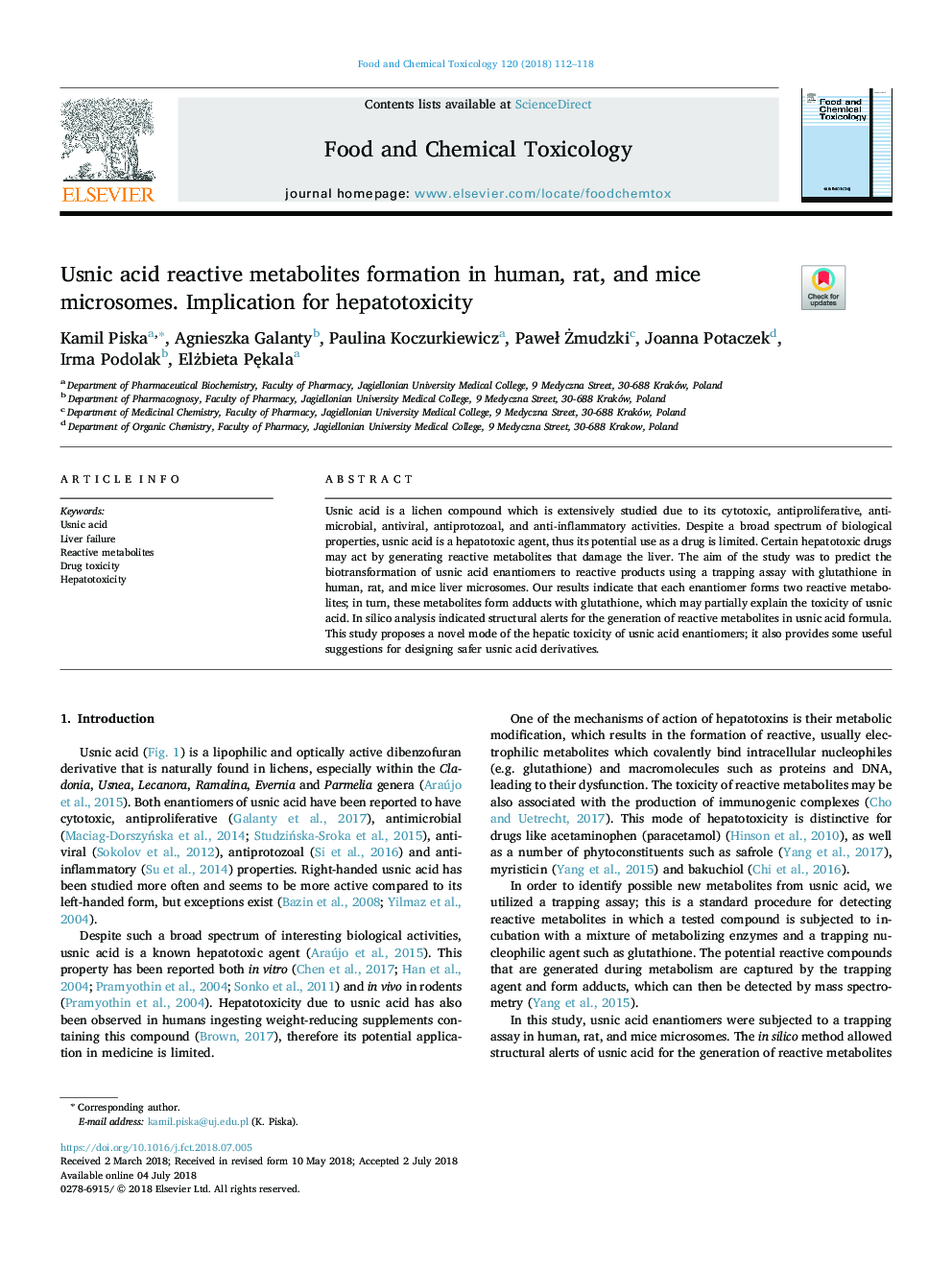| کد مقاله | کد نشریه | سال انتشار | مقاله انگلیسی | نسخه تمام متن |
|---|---|---|---|---|
| 8546284 | 1561725 | 2018 | 7 صفحه PDF | دانلود رایگان |
عنوان انگلیسی مقاله ISI
Usnic acid reactive metabolites formation in human, rat, and mice microsomes. Implication for hepatotoxicity
ترجمه فارسی عنوان
شکل گیری متابولیت های واکنش پذیر اسیدینیک در میکروسوم های انسان، موش و موش. پیامدهای سمیت کبد
دانلود مقاله + سفارش ترجمه
دانلود مقاله ISI انگلیسی
رایگان برای ایرانیان
کلمات کلیدی
اسکومیک اسید، شکستگی کبد، متابولیت های واکنشی، سمیت مواد مخدر، سمیت کبد،
موضوعات مرتبط
علوم زیستی و بیوفناوری
علوم کشاورزی و بیولوژیک
دانش تغذیه
چکیده انگلیسی
Usnic acid is a lichen compound which is extensively studied due to its cytotoxic, antiproliferative, antimicrobial, antiviral, antiprotozoal, and anti-inflammatory activities. Despite a broad spectrum of biological properties, usnic acid is a hepatotoxic agent, thus its potential use as a drug is limited. Certain hepatotoxic drugs may act by generating reactive metabolites that damage the liver. The aim of the study was to predict the biotransformation of usnic acid enantiomers to reactive products using a trapping assay with glutathione in human, rat, and mice liver microsomes. Our results indicate that each enantiomer forms two reactive metabolites; in turn, these metabolites form adducts with glutathione, which may partially explain the toxicity of usnic acid. In silico analysis indicated structural alerts for the generation of reactive metabolites in usnic acid formula. This study proposes a novel mode of the hepatic toxicity of usnic acid enantiomers; it also provides some useful suggestions for designing safer usnic acid derivatives.
ناشر
Database: Elsevier - ScienceDirect (ساینس دایرکت)
Journal: Food and Chemical Toxicology - Volume 120, October 2018, Pages 112-118
Journal: Food and Chemical Toxicology - Volume 120, October 2018, Pages 112-118
نویسندگان
Kamil Piska, Agnieszka Galanty, Paulina Koczurkiewicz, PaweÅ Å»mudzki, Joanna Potaczek, Irma Podolak, Elżbieta PÄkala,
